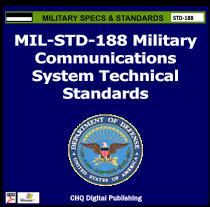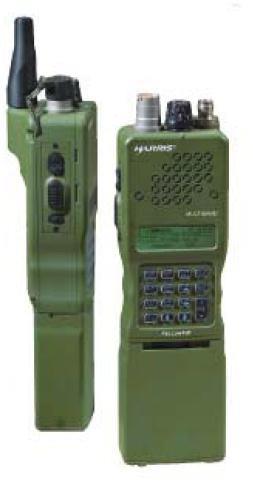IEEE 802.15 is a working group of the Institute of Electrical and Electronics Engineers (IEEE) IEEE 802 standards committee which specifies Wireless Specialty Networks (WSN) standards. The working group was formerly known as Working Group for Wireless Personal Area Networks.
Automatic Link Establishment, commonly known as ALE, is the worldwide de facto standard for digitally initiating and sustaining HF radio communications. ALE is a feature in an HF communications radio transceiver system that enables the radio station to make contact, or initiate a circuit, between itself and another HF radio station or network of stations. The purpose is to provide a reliable rapid method of calling and connecting during constantly changing HF ionospheric propagation, reception interference, and shared spectrum use of busy or congested HF channels.

Communications security is the discipline of preventing unauthorized interceptors from accessing telecommunications in an intelligible form, while still delivering content to the intended recipients.
In radio transmission, maximum usable frequency (MUF) is the highest radio frequency that can be used for transmission between two points on Earth by reflection from the ionosphere at a specified time, independent of transmitter power. This index is especially useful for shortwave transmissions.
Network architecture is the design of a computer network. It is a framework for the specification of a network's physical components and their functional organization and configuration, its operational principles and procedures, as well as communication protocols used.

MIL-STD-188 is a series of U.S. military standards relating to telecommunications.

The Defense Information Systems Agency (DISA), known as the Defense Communications Agency (DCA) until 1991, is a United States Department of Defense (DoD) combat support agency composed of military, federal civilians, and contractors. DISA provides information technology (IT) and communications support to the President, Vice President, Secretary of Defense, the military services, the combatant commands, and any individual or system contributing to the defense of the United States.

Single Channel Ground and Airborne Radio System (SINCGARS) is a very high frequency combat network radio (CNR) used by U.S. and allied military forces. In the CNR network, the SINCGARS’ primary role is voice transmission between surface and airborne command and control (C2) assets.

High frequency (HF) is the ITU designation for the band of radio waves with frequency between 3 and 30 megahertz (MHz). It is also known as the decameter band or decameter wave as its wavelengths range from one to ten decameters. Frequencies immediately below HF are denoted medium frequency (MF), while the next band of higher frequencies is known as the very high frequency (VHF) band. The HF band is a major part of the shortwave band of frequencies, so communication at these frequencies is often called shortwave radio. Because radio waves in this band can be reflected back to Earth by the ionosphere layer in the atmosphere – a method known as "skip" or "skywave" propagation – these frequencies can be used for long-distance communication across intercontinental distances and for mountainous terrains which prevent line-of-sight communications. The band is used by international shortwave broadcasting stations (3.95–25.82 MHz), aviation communication, government time stations, weather stations, amateur radio and citizens band services, among other uses.

The Joint Tactical Radio System (JTRS) aimed to replace existing radios in the American military with a single set of software-defined radios that could have new frequencies and modes (“waveforms”) added via upload, instead of requiring multiple radio types in ground vehicles, and using circuit board swaps in order to upgrade. JTRS has seen cost overruns and full program restructurings, along with cancellation of some parts of the program.

Codan Limited is a manufacturer and supplier of communications, metal detection, and mining technology, headquartered in Adelaide, South Australia with revenue of A$348.0 million (2020).

Military communications or military signals involve all aspects of communications, or conveyance of information, by armed forces. Examples from Jane's Military Communications include text, audio, facsimile, tactical ground-based communications, naval signalling, terrestrial microwave, tropospheric scatter, satellite communications systems and equipment, surveillance and signal analysis, security, direction finding and jamming. The most urgent purposes are to communicate information to commanders and orders from them.
A United States defense standard, often called a military standard, "MIL-STD", "MIL-SPEC", or (informally) "MilSpecs", is used to help achieve standardization objectives by the U.S. Department of Defense.

Clansman is the name of a combat net radio system (CNR) used by the British Army from 1976 to 2010.
MIL-STD-1760 Aircraft/Store Electrical Interconnection System defines a standardized electrical interface between a military aircraft and its carriage stores. Carriage stores range from weapons, such as GBU-31 JDAM, to pods, such as AN/AAQ-14 LANTIRN, to drop tanks. Prior to adoption and widespread use of MIL-STD-1760, new store types were added to aircraft using dissimilar, proprietary interfaces. This greatly complicated the aircraft equipment used to control and monitor the store while it was attached to the aircraft: the stores management system, or SMS.

The AN/PRC-152 Multiband Handheld Radio, is a portable, compact, tactical software-defined combat-net radio manufactured by Harris Corporation. It is compliant without waivers to the Joint Tactical Radio System (JTRS) Software Communications Architecture (SCA). It has received NSA certification for the transmission of Top Secret data.

The AN/PRC-150(C) Falcon II Manpack Radio, is a tactical HF-SSB/ VHF-FM manpack radio manufactured by Harris Corporation. It holds an NSA certification for Type 1 encryption. The PRC-150 is the manpack HF radio for the Harris Falcon II family of radios, introduced in the early 2000s.

The AN/PRC-117 translates to "Army/Navy, Portable, Radio, Communication". It is a man-portable, tactical software-defined combat-net radio, manufactured by Harris Corporation, in two different versions:
Variable Message Format, abbreviated as "VMF" and documented in MIL-STD-6017, is a message format used in communicating tactical military information. A message formatted using VMF can be sent via many communication methods. As it does not define such a method, a communications medium, or a protocol, it is not a Tactical Data Link (TDL).
Barrett Communications is a specialist manufacturer and supplier of commercial high frequency (HF), tactical HF and very high frequency (VHF) communications equipment. Its head office for design and manufacturing is located in Perth, Western Australia. Barrett was acquired by Motorola Solutions in 2022.











